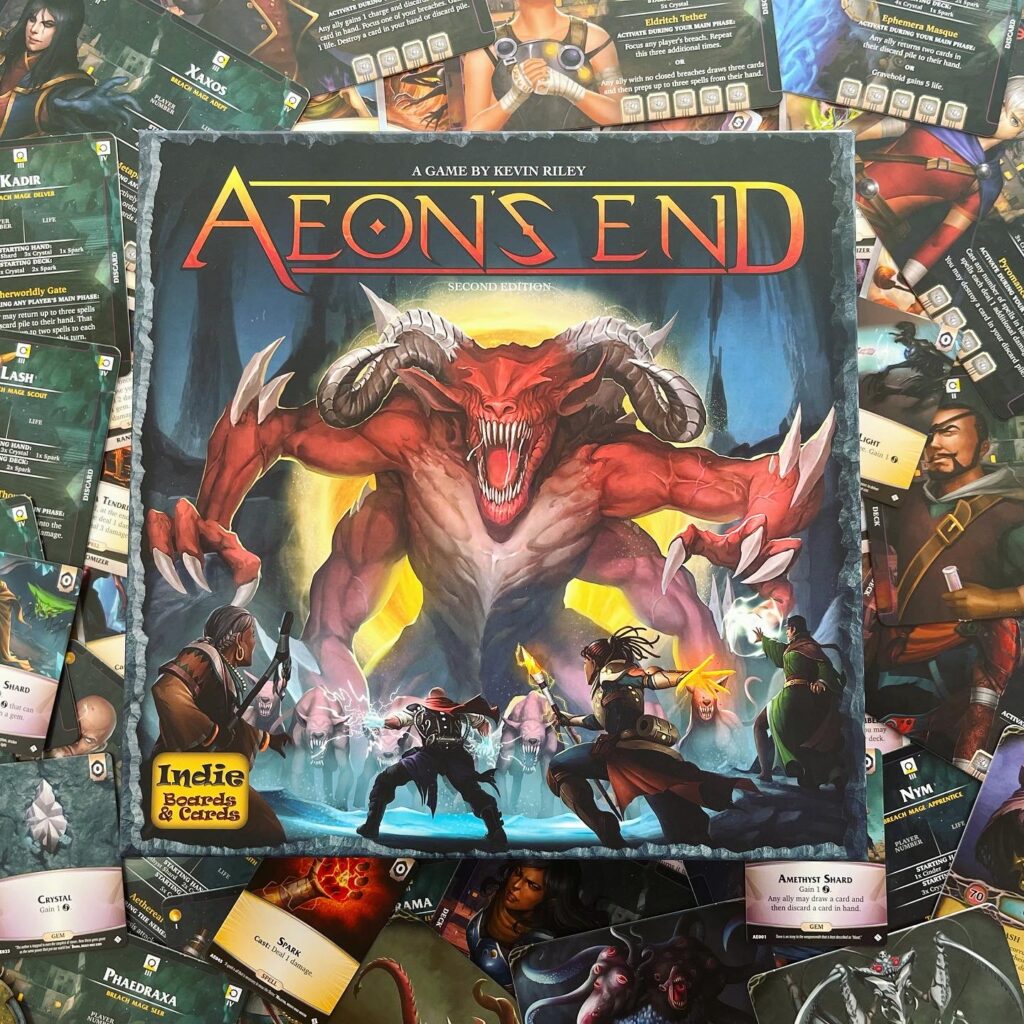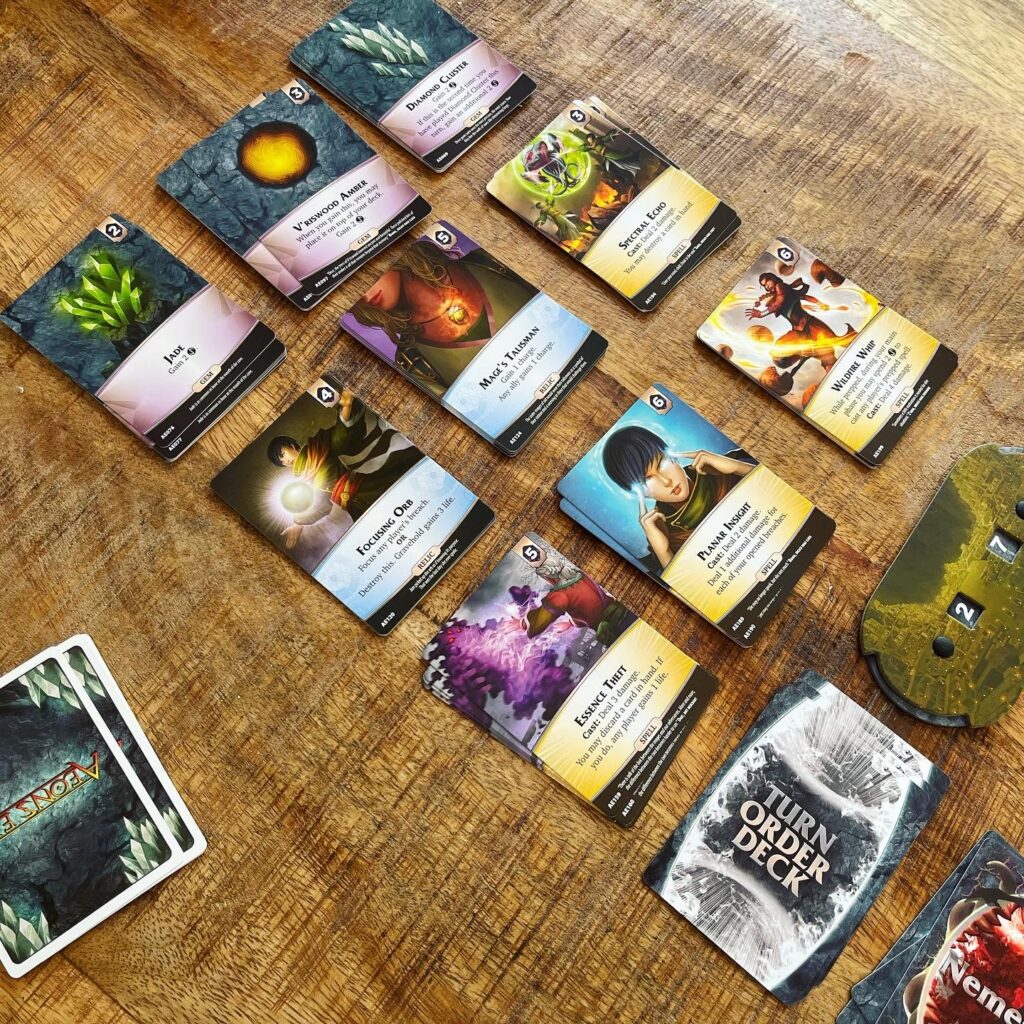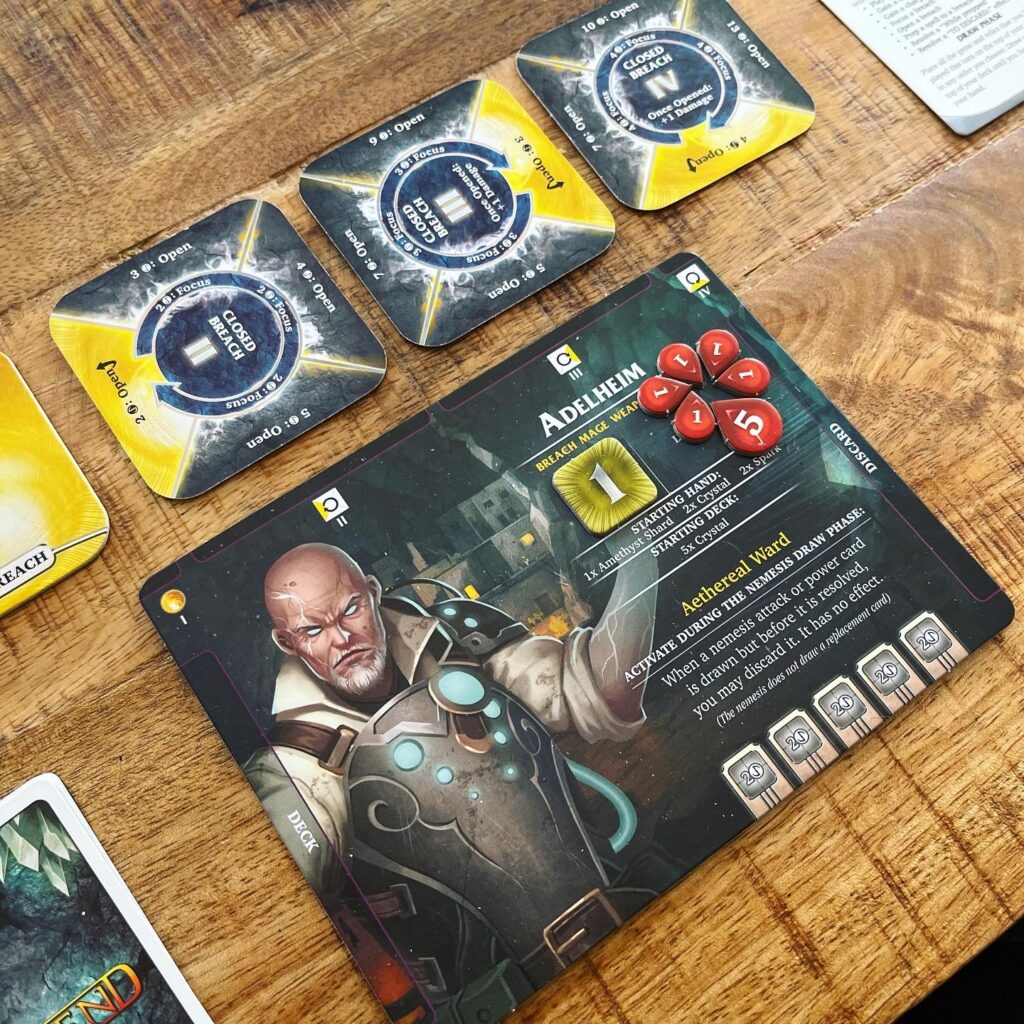Mysterious portals open a way between worlds. Although these ruptures on reality (called breaches) hurl dangerous monsters into our world that threaten the last stronghold Gravehold, the breaches also bring a way for the Graveholdian good guys to arm themselves. In fact, the breaches connect to magical potency like a sauna opening magical pores. With the breaches, the mages of Gravehold can summon powerful spells and generate powers to defeat the monsters (the Nameless).
In the cooperative deckbuilder Aeon’s End, players take on the role of the mages and collectively try to protect Gravehold. Deckbuilders come in all shapes and sizes: is Aeon’s End the end-all deckbuilder?

Aeon’s End is a long-running and popular deckbuilding series. There are now countless expansions, several standalone volumes, and even two Legacy games. The beauty: all of these games can be combined by players. In this way, players can choose from a rich selection of heroes, Gravehold has countless threats due to its many monsters, and players can play through entire storylines. Because of the different (by now almost unlimited) amount of cards with which players will form their deck, the game is indescribably varied. The new release of the base game is the subject of this review, but in the coming weeks we will take you through the various games that the world of Aeon’s End has to offer.
As described earlier, Aeon’s End is a cooperative deckbuilder. Players start with a personal deck of cards with which they will face monsters and activate effects. As the game progresses, players will purchase new cards to improve their draw pile. However, unlike other deckbuilders, players will never shuffle their discard pile to form a new draw pile. More on that later.
Set-up
At the beginning of the game, each player chooses a hero and his starting cards. Players choose (possibly randomly) a monster and its components. Each monster has deck and its own special game rules. The goal of the players is basically to defeat the monster by wiping out all of its life force or by the monster running out of cards. Players lose if the fortress Gravehold is destroyed.

At the beginning of the game, a market of cards is also laid out on the table. At the beginning of the game, players choose 3 gem cards, 2 relic cards and 4 spell cards. They can purchase these cards during the game. Due to the many different types of cards and monsters, players can arrange the game setup as they choose or let fate decide.
The turn order of Aeon’s End is not traditional. A pile of cards determines which player (or monster) has their turn. In fact, the card drawn indicates whose turn it is.
The player’s turn
During a turn, the active player goes through several phases/steps. A player activates prepared spells (if any). Spells are placed at 1 of the players’ breaches. There are open and closed breaches. An open breach is often stronger and a player has more control over it. For closed breaches, prepared spells must actually be activated. Activated spells go directly to the discard pile.

Then players can do different actions with the cards on hand. Gem cards mostly allow players to collect aether to buy new cards or perform other actions. Relics contain special effects to help players progress (for example, extra lives or opening of breaches). Spells can be prepared by players during this phase. Spells mostly deal damage to enemies.
All unused cards remain on hand and played cards are placed in the discard pile in any order. The player then replenishes his or her hand up to 5 cards. When the draw pile is empty, the discard pile is not shuffled to form a new draw pile, but instead the discard pile is turned over. So players have an influence on the order of the appearance of their cards! This is a hugely sophisticated, ingenious and innovative element. Good planning is essential and players must think several rounds ahead. That planning is extra interesting and relevant since the game has no traditional turn order. Players do not know exactly when it is their turn, but can calculate the probability. Players must therefore continually know how to adjust their strategy, which makes the game bring entertaining dilemmas to the table.
The monster strikes (back)
When it is the monster’s turn, the monster’s special rules are consulted. In principle, all monster cards already played are settled in order. These are minions of the monster or special powers that count down to the moment they are invoked. Often these minions or effects do damage to players or Gravehold, so you want to defeat them as quickly as possible. Minions you can do damage to and powers you can sometimes discard by meeting certain conditions. Then a new monster card is revealed and this may cause new minions, powers or the monster to make a direct attack.
Conclusion
Aeon’s End is a delightful race against evil. Players try to match their strategy to the available cards and the monster to be defeated. Because of the variety, a game doesn’t easily feel the same as a previous game. The changing turn order and the influence of the order on cards in the deck make for strategic considerations and tactical entertainment.
The game is easy to learn because the game includes an intro game before the first game, which allows players to easily learn the various components and structure of the game. The gameplay is smooth and intuitive. It feels familiar because of known mechanisms, but at the same time innovative because of the variations on the genre. Highly recommended and a game that has a lot to offer.







